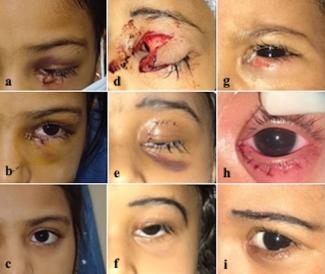Author Insights: Evaluating the Incidence of Breast Implant Illness and Communicating the Risks
Author Insights: Evaluating the Incidence of Breast Implant Illness and Communicating the Risks from HMP on Vimeo.
Magnus Chun of the Tulane University School of Medicine discusses the FDA approval studies for breast implants as well the challenges in evaluating the incidence of breast implant illness and communicating the risks to patients without an ICD-10-CM diagnosis code in this follow-up interview.
Video Transcript
Magnus Chun: My name is Magnus Chun. I'm a medical student at the Tulane University School of Medicine in New Orleans, Louisiana. I'm affiliated with the Department of Plastic Surgery at the Tulane University School of Medicine.
Prompt: Describe the FDA approval studies and outcomes for breast implants.
Magnus: You can find the FDA approval studies on their website at the fda.gov. There has been a lot of studies that have come out. I'm just going to talk about some of the recent ones.
The most recent FDA clinical study that was conducted, and is still being conducted, it's still in process, is the Motiva silicone gel-filled breast implants, specifically for primary breast augmentation patients. You can read all about that study on their web page. CLIN17-008 is the study number. They're still in the preliminary phase of the clinical trial.
Another one that just finished back in 2019, two years ago, looked at silicone breast implants. This was with the Department of Plastic Surgery in Texas at the Cancer Center in Houston. They looked at silicone breast implants from two different companies, Allergan and Mentor.
That included about 100,000 patients. They compared data looking at silicone implants. They saw that there was an associated higher risk with these patients with silicone implants that had Sjogren syndrome, scleroderma, rheumatoid arthritis, melanoma. All these different autoimmune disorders come popped up with patients with silicone breast implants.
Now, whether or not that's because there's an underlying cause, that might be a limitation to the study. However, they did see there was an association between silicone breast implants and all these autoimmune disorders.
With all these studies, FDA came out with a set of new actions per se back in 2021, so a year ago, in order to strengthen the communication and the informed decisions around breast implants and the different symptoms that patients might get with breast implants.
I'm just going to quickly touch on a couple of them. The FDA issued orders actually to restrict the sale and distribution of breast implants to ensure patients who are considering breast implants are provided with the adequate risk information that they need.
There were a lot of information communication re-amping, per se, to help these patients understand that it's important that they understand what decisions they're making in terms of putting in breast implants.
Another important part of the new orders that the FDA recently approved back in 2001 was that, with all the marketed breast implants, they needed to include box warning on the box that they sell to the plastic surgeons that there could be different symptoms with these breast implants.
They also included a description of the specific materials in the breast implants. They also included a checklist, which actually correlated with both the patient and the healthcare provider to ensure the patient understand what the risks are, what the benefits are.
And have a checklist for the provider going through each step to make sure that they've acknowledged all the risks and benefits of the patient receiving breast implants. Those are just a couple of things that the FDA did. You can read all about that on the web page, fda.gov.
Prompt: Has the change in the structure and materials in current implants changed the incidence of BII from the pre-FDA studies?
Magnus: It's unfortunate because breast implant illness, or what we call BII, there actually is no current ICD-10 codes. What that means is there is no proper diagnosis of breast implant illness. For example, if a patient came into the ER with symptoms of breast pain, of fever, mastitis, all that symptoms, you cannot physically diagnose this patient with breast implant illness.
Although they might have gotten the breast implant and they have these symptoms that we say breast implant illness, we don't have that in the ICD-10 codes. We don't know what these changes to the structure in the materials have changed instances of BII because of the fact that it's not a diagnosable illness, and we probably won't know for years.
That's the reason why we wrote this paper. Was that we wanted to prove, per se, that breast implant illness is a diagnosable disease and that it should be in ICD-10 code.
Some other examples include some of the companies—Allergan, Mentor, Sientra—who produce these aesthetic products, these breast implants for plastic surgeries have added blackbox warning labels describing possible causes of symptoms of BII, but again, there is no diagnosis. So they are restricted in that they can only add these descriptions but there's no way we can diagnose it for sure.
To sum that up, we will not know the incidence of BII based on the changes in the structure in the materials. This is the reason why we need to do more studies to show that BII is a real disease.














